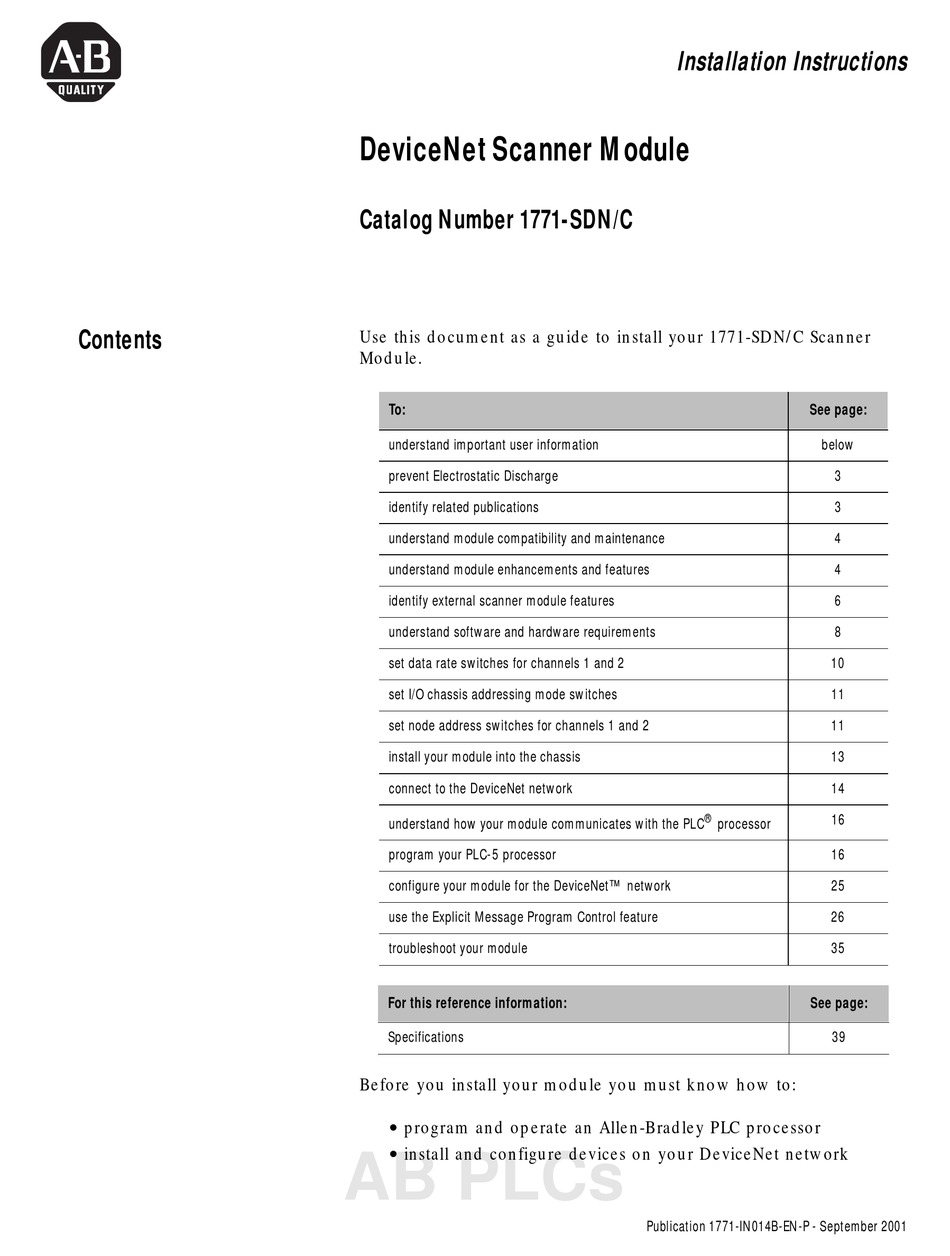

Switch 1: Last State - This is for the last state of the outputs if a communication fault occurs. You must take important care to use the correct chart for the settings of your chassis. Realize that these settings are different than for a processor. This allows us to make changes to the project as we need. Normally, we’ll leave this switch OFF, and memory protection is disabled. This will prevent a user from downloading to the processor, or performing an online edit. Switch 8: Memory Protect - Turn this switch ON to enable memory protection. If there is no EEPROM, or we wish to load the EEPROM manually, turn 6 on and 7 off. With both switch 6 and 7 on, the EEPROM will load only if the processor memory is invalid. With 6 and 7 off, the EEPROM will load at power-up. Switch 6 and 7: EEPROM Transfer - If you use an EEPROM as an onboard backup of your project, we will need to decide the conditions in which we need the EEPROM to load. (1/2 slot addressing) - Both switches ON is an invalid setting. When 4 is on and 5 is off, every 1/2 slot equals a group. With 4 off and 5 on, every slot equals a group (1-slot addressing). If both switches are OFF, every 2 slots equal a group (2-slot addressing). (A group 16 bits of input and 16 bits of output). Switch 4 and 5: Addressing Mode - The addressing mode tells the processor how many slots equal a group of memory. However, these switches could be used if an adapter or PLC-2 processor was in this slot. Switch 2 and 3: Always Off - If a processor resides in this chassis, we do not use these two switches. Switch 1: Last State - If this switch is ON, the outputs of the chassis will stay in their last state if a hardware failure occurs. Configuring Because a PLC-5 controller adapter channel is more intelligent than a 1771-ASB.
1771 PROCSSOR MANUL PDF
The graphite could cause the switch to be permanently on. PLC-5 - read user manual online or download in PDF format. It’s important to remember to not use a pencil point when setting these switches. In like manner, if we press a switch in on the right, it’s on. If we press a switch in on the left, the switch is off. In this case, we have 8 “Rocker” Switches.

These switches configure the chassis for the desired operation. On the backplane, you see 8 Dip Switches.

The chassis holds modules, whereas a rack is a memory location in the processor. The first thing to remember is that the chassis is not called a “rack” in the PLC-5.


 0 kommentar(er)
0 kommentar(er)
